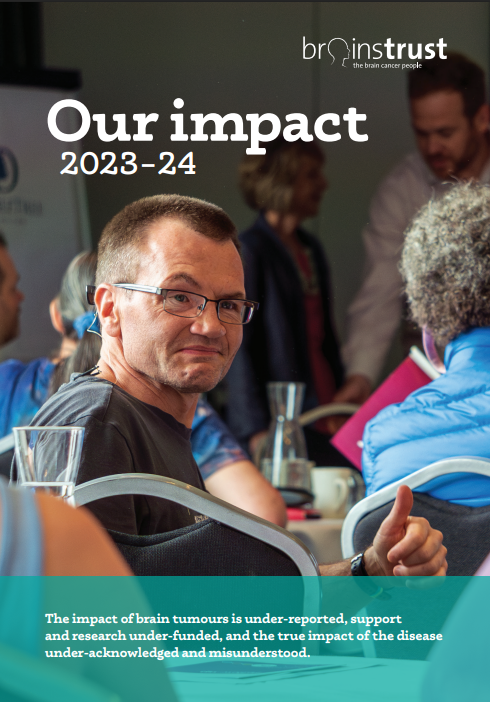Brain tumour treatment and care during the pandemic

The Coronavirus pandemic has caused disruption to lots of different aspects of our daily lives. People living with a brain tumour diagnosis have probably found the treatment and care they have received under the NHS to be very different to how it was prior to the pandemic.
Since the start of the pandemic, although under pressure, the NHS has remained open for those who need it. Cancer services have remained a priority and the key message from the NHS remains the same:
If you are experiencing symptoms that are concerning you, get in touch with your GP or clinical team.
The key messages coming from the NHS about cancer services reflect what we’re hearing from the brain cancer community:
- 89% of people diagnosed with cancer from March – December 2020 were seen within 2 weeks,
- 96% of patients started treatment within 31 days of the decision to treat,
- The number of urgent cancer referrals and treatments taking place were higher in December 2020 than they were before the pandemic,
- NHS staff are working tirelessly to ensure that cancer treatment can continue safely,
- Patients are being encouraged to continue attending appointments,
- Cancer surgery is continuing to take place, with people being prioritised based on clinical need.
What does this mean for people living with a brain tumour?
The key messages above apply for all cancer services. We know that not all brain tumours fall under this category. Depending on the tumour type, brain tumours can be malignant and non-malignant.
We know through our support services that people are seeing treatment, surgeries and MRI scans delayed and affected due to the pandemic. If this applies to you – please know that if your treatment or surgery is classed as urgent, it will take place. Delays will take place where cases have been assessed as not requiring urgent care.
Understandably, the emotional impact that comes with uncertainty around treatment or surgery is great. The NHS has produced guidance for clinicians to help them effectively communicate with people experiencing delays and cancellations. However, it’s hard to talk with your clinicians when emotions are high and you want to be understanding and rational.
Want to know how to communicate well with your clinical team?
We’ve shared the key principles behind the NHS communications guidance, so you:
- Have a better understanding of whats at play, if treatment is delayed,
- Can engage constructively with their clinical team to ensure the best outcomes.
Click here for more information.
If you are struggling with the emotional stress of waiting for treatment, get in touch. Whilst we won’t be able to change the situation, we can provide you with the space to talk about your concerns, offer support and help you find a way forward.










